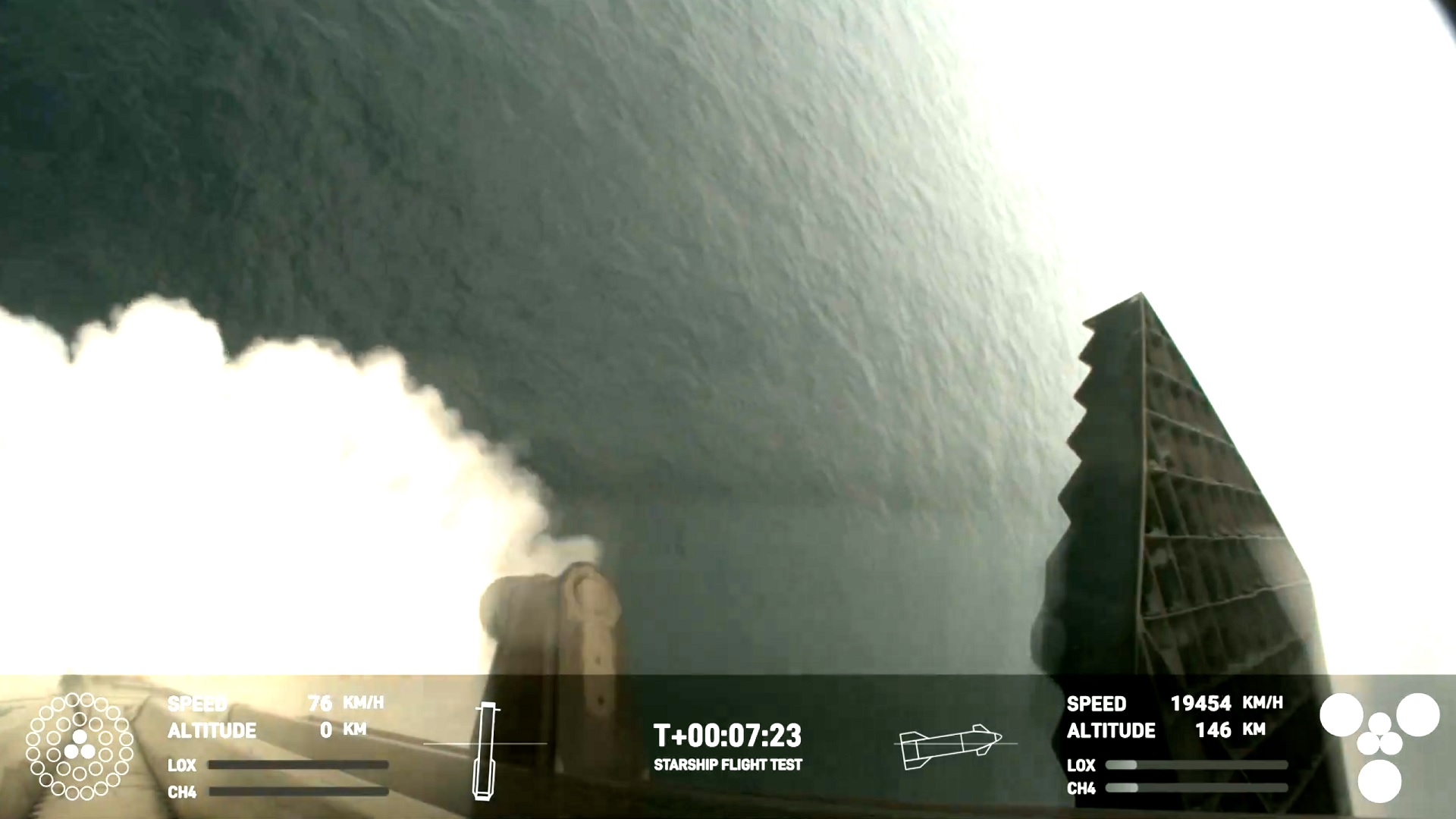SpaceX Splashdown Overview

SpaceX splashdowns are a crucial aspect of the company’s reusable rocket technology, enabling the recovery and reuse of valuable spacecraft components. These splashdowns involve the controlled descent and landing of a rocket’s first stage in the ocean after it has completed its mission of propelling the payload into orbit.
The key components involved in a SpaceX splashdown include the rocket’s first stage, which is equipped with grid fins and landing legs for controlled descent and stabilization upon landing. The splashdown process begins with the first stage separating from the upper stage of the rocket and initiating a controlled descent back towards Earth. Grid fins on the first stage guide its re-entry into the atmosphere, allowing for precise steering and maneuverability. As the first stage approaches the ocean’s surface, landing legs extend to prepare for impact. The splashdown itself occurs when the first stage touches down on the ocean’s surface, utilizing the water’s buoyancy to decelerate and cushion the landing.
The development of SpaceX splashdown technology has been marked by several milestones. In 2015, SpaceX successfully landed the first stage of its Falcon 9 rocket on a floating platform in the ocean, demonstrating the feasibility of reusable rocket technology. Since then, SpaceX has continued to refine its splashdown capabilities, achieving numerous successful landings of both Falcon 9 and Falcon Heavy first stages. These advancements have played a significant role in reducing the cost of spaceflight and paving the way for more sustainable and cost-effective access to space.
Historical Context
The concept of reusable rockets has been explored for decades, but it was not until the advent of SpaceX that the technology became a practical reality. Prior to SpaceX’s breakthroughs, rockets were typically discarded after a single use, resulting in significant costs and environmental waste. SpaceX’s innovative approach to rocket design and recovery has revolutionized the space industry, making reusable rockets a cornerstone of its operations.
Significance of SpaceX Splashdowns
SpaceX splashdowns are significant for several reasons. Firstly, they enable the recovery and reuse of valuable rocket components, reducing the cost of spaceflight. By recovering and refurbishing the first stage of its rockets, SpaceX can significantly lower the cost of launching payloads into orbit. This cost reduction has opened up new possibilities for space exploration and commercial space ventures.
Secondly, splashdowns contribute to the sustainability of spaceflight. By reusing rockets, SpaceX reduces the amount of space debris and environmental impact associated with traditional rocket launches. This commitment to sustainability aligns with the company’s long-term vision of enabling a future where humanity can sustainably explore and utilize space.
Finally, SpaceX splashdowns serve as a testament to the company’s engineering prowess and innovation. The ability to land a rocket on a floating platform in the ocean requires precise control, advanced technology, and a deep understanding of rocket dynamics. SpaceX’s success in this area demonstrates the company’s leadership in the field of space exploration and its commitment to pushing the boundaries of what is possible.
Technical Aspects of SpaceX Splashdowns

SpaceX splashdowns involve a series of complex engineering challenges, requiring innovative solutions to ensure the safe recovery of the Dragon capsule and its valuable cargo. These challenges include withstanding the extreme forces of re-entry, navigating the precise landing site, and recovering the capsule from the ocean.
The SpaceX Dragon capsule is meticulously designed to withstand the intense heat and pressure encountered during re-entry into Earth’s atmosphere. Its heat shield, made of a composite material called PICA-X, protects the capsule from temperatures reaching over 3,000 degrees Fahrenheit. The capsule’s aerodynamic shape allows it to maintain stability and control during its descent.
Recovery and Refurbishment Process, Spacex splashdown
Once the Dragon capsule has splashed down in the ocean, it is retrieved by a SpaceX recovery vessel. The capsule is then carefully lifted out of the water and transported back to shore for refurbishment. During the refurbishment process, the capsule undergoes a thorough inspection, and any necessary repairs or upgrades are made. The capsule is then prepared for its next mission, ensuring its continued reliability and safety.
Impact of SpaceX Splashdowns

SpaceX splashdowns have significantly impacted the space industry by revolutionizing the concept of reusable spacecraft and lowering launch costs. This innovation has the potential to transform future space exploration missions.
Role in Reusable Spacecraft
SpaceX splashdowns enable the recovery and reuse of spacecraft, a critical factor in reducing launch costs. By landing the first stage of its rockets in the ocean, SpaceX can refurbish and reuse them for subsequent launches, significantly reducing the overall cost of space access.
Reduced Launch Costs
The reusability of SpaceX rockets achieved through splashdowns has dramatically reduced launch costs. By eliminating the need to build and dispose of new rockets for each launch, SpaceX can offer more affordable launch services to customers, opening up new possibilities for space exploration and commercial applications.
Implications for Future Missions
The potential implications of SpaceX splashdowns for future space exploration missions are immense. Reusable spacecraft can enable more frequent and cost-effective missions to Mars and other destinations, expanding our knowledge of the solar system and facilitating human spaceflight.